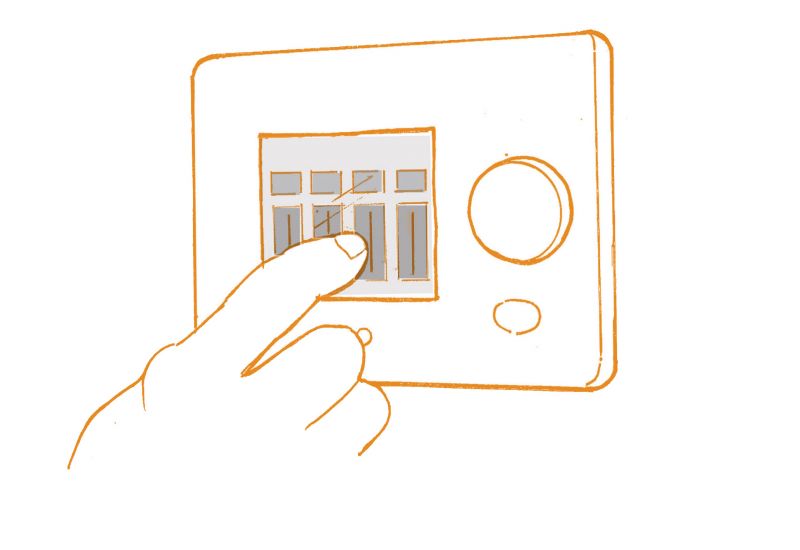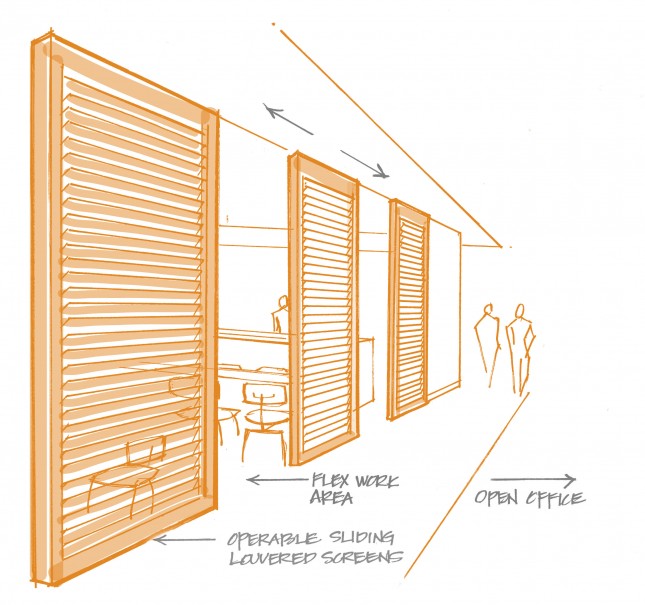Humanising the Workplace to Achieve Better Business Results

With the influx of new technologies and alternative workplace solutions today, it is easy to adopt these as so called quick fixes, with little regard to the impact on human performance and wellbeing. However, there are timeless, reoccurring patterns in human behaviour to be considered when adopting new technologies or workplace solutions. What is a "pattern"? A pattern describes human physiological and psychological factors that repeat over and over again which impact on performance and wellbeing. The best workplace solution addresses these patterns as much as the functional, technological and business aspects of the problem, in effort to keep employees happy and productive in the workplace.
This might seem obvious however there are few examples of how the workplace can leverage these patterns and fewer still that measure the results.
We have distilled a number of patterns into a list of workplace objectives which we have developed over the past thirty years based on observation, research, survey and experience. This series of blogs share our 10 top workplace objectives and provide tips on how to help make your workplace more productive and business more successful...
With the influx of new technologies and alternative workplace solutions today, it is easy to adopt these as so called quick fixes, with little regard to the impact on human performance and wellbeing. However, there are timeless, reoccurring patterns in human behaviour to be considered when adopting new technologies or workplace solutions. What is a "pattern"? A pattern describes human physiological and psychological factors that repeat over and over again which impact on performance and wellbeing. The best workplace solution addresses these patterns as much as the functional, technological and business aspects of the problem, in effort to keep employees happy and productive in the workplace.
This might seem obvious however there are few examples of how the workplace can leverage these patterns and fewer still that measure the results.
We have distilled a number of patterns into a list of workplace objectives which we have developed over the past thirty years based on observation, research, survey and experience. This series of blogs share our 10 top workplace objectives and provide tips on how to help make your workplace more productive and business more successful...
Week 1: Provide User Control Over Privacy, Environment and Technology
People are diverse, so the key to designing a workplace that works for the individual is in providing control (real and perceived). Here are a few tips to allow for user control in your workplace so you don't hear: I'd get more done if I worked from home.
Symbols to Control interruption and distractions
- Sometimes people want to hear and see what others are doing, at other times people want visual and acoustic privacy. Control can be provided through symbols, protocols, screens and boundaries. Consider simple solutions such as using symbols which communicate €œDo Not Disturb.€ We use good old Proto Blocks in our open office at Resource to communicate our availability. A good understanding of how each other work doesn't hurt either.
- Provide acoustic solutions for noise reduction, like sound masking to drown out interruptions like noisy co-worker and to also aid in improving privacy for phone calls.
Provide spaces that allow for quick shifts from enclosure to openness
- Use simple mobile furniture such as privacy screens. Group Work, by Steelcase is an easy option.
- Provide flexible boundaries for transformation of spaces. Consider the benefit of operable walls over solid partitions to provide division of space when needed.

Plan for user-controlled environments that allow for individual adjustment
- Consider the benefits of providing greater user control of temperature, acoustics and lighting by investing in user-friendly smart technology with integrated energy management.
- Enable users to shift their equipment, storage and furniture and enable them to select work tools and accessories to optimise their space.
Provide physical and virtual spaces that can support individual needs
- Provide the capability for people to easily connect to technology and people but also provide them with private spaces which foster the need to unplug and disconnect. The key to an effective workplace is balancing the allocation of space for both individual and group work.
- Support the users ability to multi-task more efficiently by using a single cloud based platform for technology with a user-friendly interface and software which aligns to the business operations. The key is to make getting work done easier for people, not more complicated!
- Provide the necessary tools and policies to give employees a variety of choices for when and where to work. As noted in the 2013 Workplace Survey by Gensler, "employers who provide a spectrum of choices for when and where to work are seen as more innovative and have higher-performing employees.

Empower individuals and teams to control their technology
- Provide training for employees so they are proficient and aware of the capability of the businesses ICT (Information and Computer Technology) systems and software.
- Empower employees to modify their technology to their comfort and BYOD (bring your own device) into the workplace. Technology in the workplace is now driven mostly by the user and so it is important to have IT departments embrace technology that runs on user platforms.


